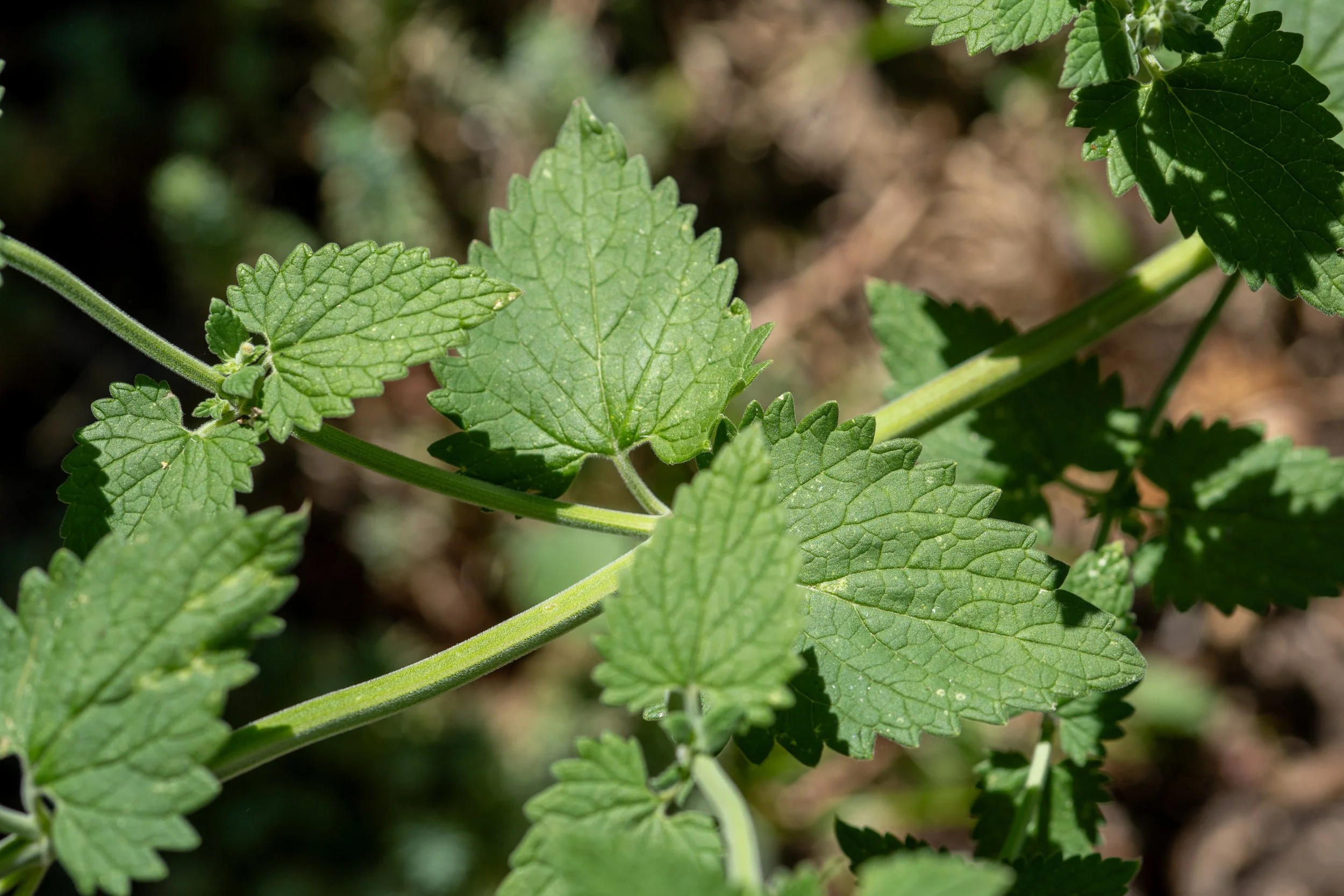What is Catnip and How Does It Grow?
Catnip is a lovely plant that fills the garden with pleasant aromas and beautiful flowers. Grow it and dry the leaves for tea, or give them to your cats to drive them wild! Seasoned grower Jerad Bryant shares what catnip is and how it grows.
Nepeta cataria (commonly known as “catnip”)is an herbaceous perennial that hails from the Mediterranean and regions of western Asia. It has herbal, medicinal, and recreational uses for cats and humans, although cats seemingly love this plant more than we humans do!
Nepeta cataria affects cats in many different ways upon consumption, although a third of all cats do not experience the effects of catnip. This is comparable to how some people think the taste of cilantro is like soap. The cats that are affected by the herb experience a wide range of effects from lackadaisical low energy to alert play.
My kitty Tiger loves catnip, and he experiences a wide range of effects when he consumes it. Sometimes he is distracted by what appear to be hallucinations, and he runs around chasing after something that is not there. Other times, he wants to roll around and be insistently pet over and over. Giving my kitty catnip is one of my favorite activities, and I sense that it is one of his favorites, too.
Catnip flower spike beginning to pop out!
Use dried catnip leaves for a lovely tea. Hang a bushel of catnip to dry, enclose the crunchy leaves in a tea strainer, and brew your tea. Add honey and lemon for a delicious, warm, soothing tea. Catnip is also an insect repellent due to its strong scent and can help keep garden pests away when planted near other herbs, vegetables, or ornamental plants. It is beautiful when it flowers, and it is a wonderful addition to any garden.
How to Grow Catnip
Catnip is a fast grower that loves organically rich and well-draining soil. It is a plant in the Mint family, Lamiaceae, and it shares some common growth habits with other plants in this family. Much like mint, catnip quickly establishes itself, although it does not overrun an area like mint will do. Catnip forms a large clump of erect stems that shoot into the sky once the warmth of spring and summer arrives. Atop each erect stem protrude spikes of whitish-pinkish little flowers that the bees and butterflies LOVE. This herb reaches 4-5’ high and 3-4’ wide if left to grow to maturity. It towers over all the vegetables and flowers in my garden and provides a lovely, rich, and forest-green focal point.
To grow this herb, you can start seedlings from seed, or if you have access to catnip that is already growing, you can take cuttings for propagation. I started my catnip clump from seeds indoors and planted the plants out in the garden in late spring. Growing catnip from seed is easy, although propagating it with cuttings is easier.
Catnip seeds form from spent flowers.
Seeds
Start seeds in little 4” pots filled with sterile potting soil (Don’t bring soil from the garden inside, or you might be bringing hitchhiking garden pests inside too.). Wet the soil before placing the seeds. Then lightly press the seeds onto the potting soil and cover with a thin layer of more soil. With temperatures between 60-70 degrees Fahrenheit seeds will sporadically germinate over 2-3 weeks. I grew mine under LED grow lights, although you can also place them in front of a window that receives good light. Once the small plants are at least 4” high (and if the weather is warmer than 55 degrees Fahrenheit at night) you can set them outside for a week under cover. This process allows them to become acclimated to outdoor temperatures and become strong enough to live under full sun. After a week under cover transplant the starts directly into the garden where the plants have access to full sun and have plenty of room to grow.
Cuttings
Remove the lower leaves of the cuttings, and leave the ones at the top.
Propagating catnip by taking cuttings is as simple as it sounds. During spring and early summer, take cuttings with three to four leaf nodes. Strip the cuttings of all leaves except for a few at the top and place them in cups of water. Add rooting hormone if you have it, although this step is not completely necessary. Let them drink some water for a bit while you prepare their pots. Fill 4” square pots with sterile potting soil and wet the pots so that the soil is moist. Place cuttings in the pots and ensure the soil stays moist.
You will have better rooting success rates if you cover the plants with plastic bags or a see-through dome of sorts. 2-liter soda bottles can work for this, too. Cut the bottle top off and place the bottle over the plant. This acts as a trap for moisture and increases the humidity within the bottle. Place cuttings with their coverings in dappled shade. Keep them moist at all times. Direct sun while they are rooting can kill them because the plants have little to no roots to stay strong during times of stress.
After about two or three weeks, the cuttings should have roots. If they are brown or wilted, they are likely dead and did not receive consistent moisture. Take the coverings off the live cuttings and let them sit another week in their pots before transplanting them to larger pots or out into the garden.
Final Thoughts
And there you have it! That’s all I know about Nepeta cataria. I hope this has proven helpful and that you are readying pots now to start growing catnip! If you still have questions, let me know in the comments below.



